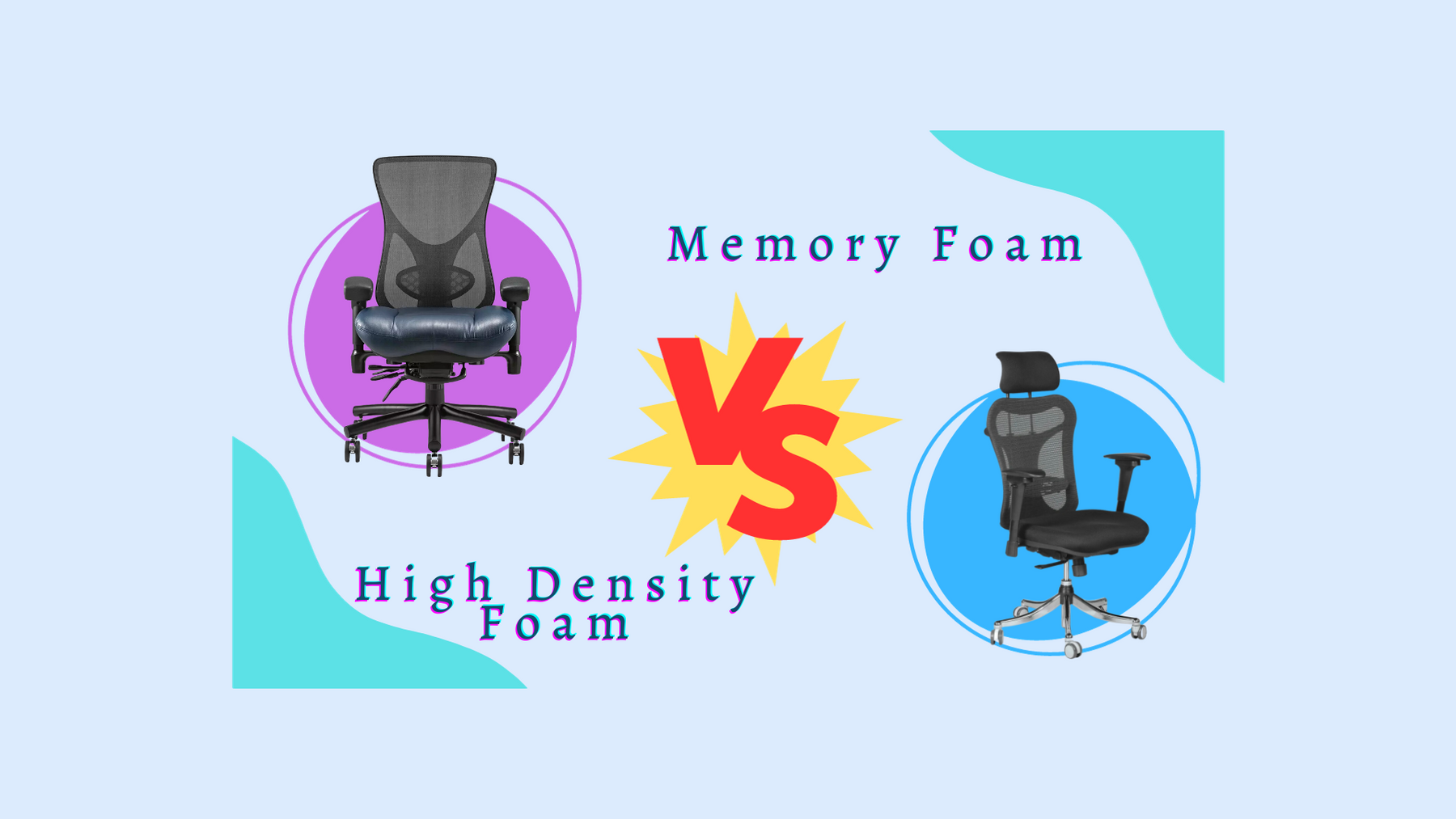
Memory Foam vs. High-Density Foam Ergonomic Chair Padding: The Ultimate Comfort Battle
Imagine a world where sitting is as comfortable as lying on a cloud. You sip your coffee, type away at your emails, and then it dawns on you – your back and seat don't hurt! Such is the dream of every office worker. But which reigns supreme: memory foam or high-density foam?
Background & Context
It is surprising that in 2019, 86% of the US workforce spent their entire workday sitting (1). This prolonged sitting has caused an increase in various musculoskeletal problems, mainly back pain. Consequently, there is an urgent need for ergonomic solutions in the workplace. When we analyze these solutions, the choice of chair padding material emerges as a crucial factor.
The chair padding industry has evolved tremendously. Initially, most chairs used basic foams or even cotton batting. Now, with advancements in material science, options like memory foam and high-density foam have transformed the landscape. Yet, with evolution come questions. Which is more environmentally friendly? Which lasts longer? What is the ultimate source of comfort?
The Problem
Sitting for long periods can lead to various health issues, such as back pain, reduced blood circulation, and buttocks pain. Prolonged sitting can cause aching in the buttocks. If the surface is too hard, it can worsen sciatica (a pain that radiates along the path of the sciatic nerve). The quality of a chair's padding can play a crucial role in alleviating or exacerbating these concerns.
The Solution
Choosing between memory foam and high density foam for your seat and back cushions
Memory Foam:
Pros:
- Body-Hugging Support: Originally developed by NASA in the 1960s for aircraft safety, memory foam is renowned for its pressure-relieving abilities. It provides excellent support for the spine and seat, reducing pressure on the back and buttocks. This makes it an ideal choice for those who sit for extended periods of time.
- Temperature Regulation: Made of polyurethane with specific additives, memory foam adjusts to your body temperature, ensuring warmth in chilly offices.
- Hypoallergenic: Memory foam chairs are often resistant to dust mites and other allergens, making them a boon for those sensitive to such irritants.
- Cost-Efficient in the Long Run: Memory foam's price has decreased since its commercial introduction, making it as affordable as standard foam seats. Plus, its durability ensures it lasts.
Cons:
- Heat Retention: While some find the warmth comfortable, others might find it overly warm.
- Initial Odor: New pads often exude a distinct smell, though it fades over time.
- Environmental Concerns: Chemicals are involved in its production, raising environmental eyebrows. However, many manufacturers now lean towards greener processes.
- Cost: Typically more expensive than high-density foam.
High-Density Foam:
Pros:
- Firm Support: It provides a solid, consistent support level.
- Longevity: With care, it often outlasts other materials.
- Cost-Efficiency: Often more wallet-friendly than memory foam.
Cons:
- Less Adaptive: Unlike memory foam, it doesn't adapt to the body's contours.
- Potential Stiffness: Some users might find it excessively firm.
- Environmental Questions: Its production can be energy-intensive, but greener methods are emerging.
Importance of Foam Density
Foam density plays a pivotal role in determining the quality and durability of foam. The higher the density, the greater the durability.

Table from FoamOnline
Construction and Environmental Impact
Memory Foam: Initially conceptualized by NASA, memory foam is crafted from viscoelastic polyurethane foam. One of its defining characteristics is its responsiveness to body heat, enabling it to mold itself to the contours of a warm body in minutes. On the flip side, its production, which entails the use of chemicals, has been the subject of environmental scrutiny. On a brighter note, numerous companies are steering towards creating eco-friendly memory foam variants using plant-derived materials1.
High-Density Foam: This specific type of foam is essentially polyurethane foam. This foam stands out for its compact structure and higher density compared to other foam types. It's known for its durability and ability to provide a firm and comfortable seating experience. Although it's made using chemicals, the good news is that the industry is moving towards more environmentally sustainable methods of production. (3)
Conclusion
Both memory foam and high-density foam have their merits. Your choice depends on your unique ergonomic needs and comfort preferences. Do you prefer a firmer seat (high density foam) or one that conforms to your body?
Remember:
- Research & Reviews: Look for chairs that have garnered positive feedback from users with similar needs as yours.
- Consider Your Work Hours: Your sitting duration impacts the right padding choice.
- Maintenance Matters: Care for your chair for longevity.
- Cost: Always something to consider.
References
- Survey: 86% of U.S. Workers Sit All Day." Ergotron. 2019. https://www.juststand.org/wp-content/uploads/2017/05/SurveyIndexReport.pdf
- Memory Foam." NASA Spinoff https://spinoff.nasa.gov/node/9021
- FoamOnline. https://foamonline.com/blog/differences-similarities-between-foam-density-weight-firmness/#comments
